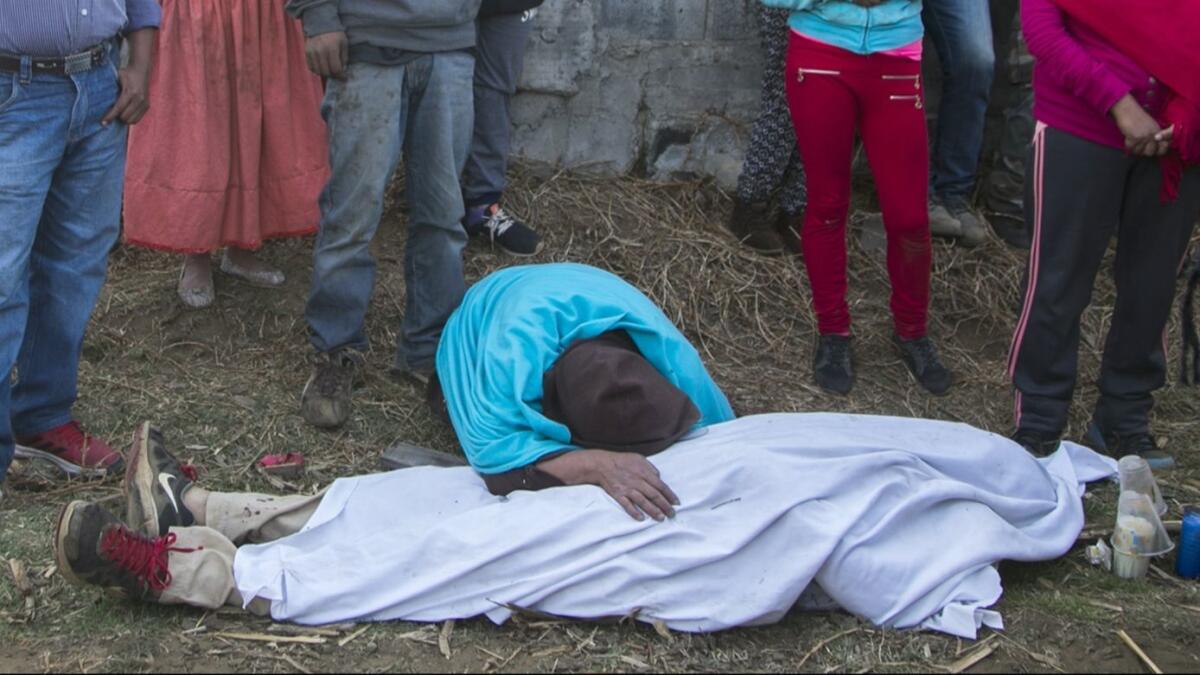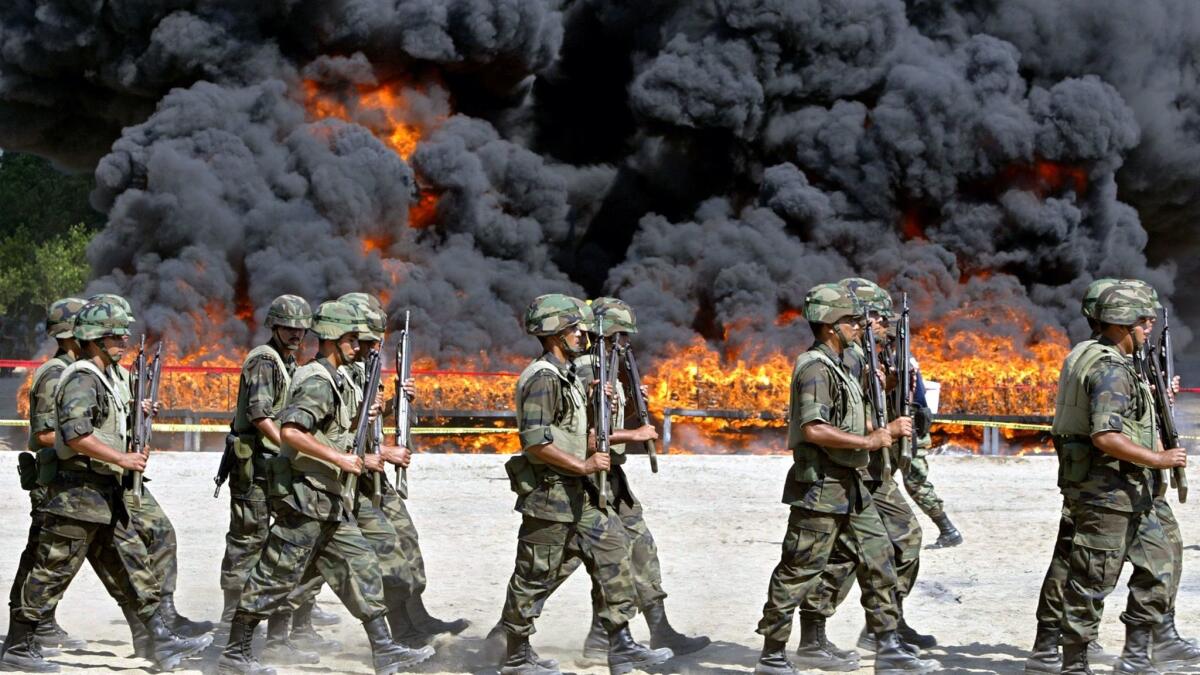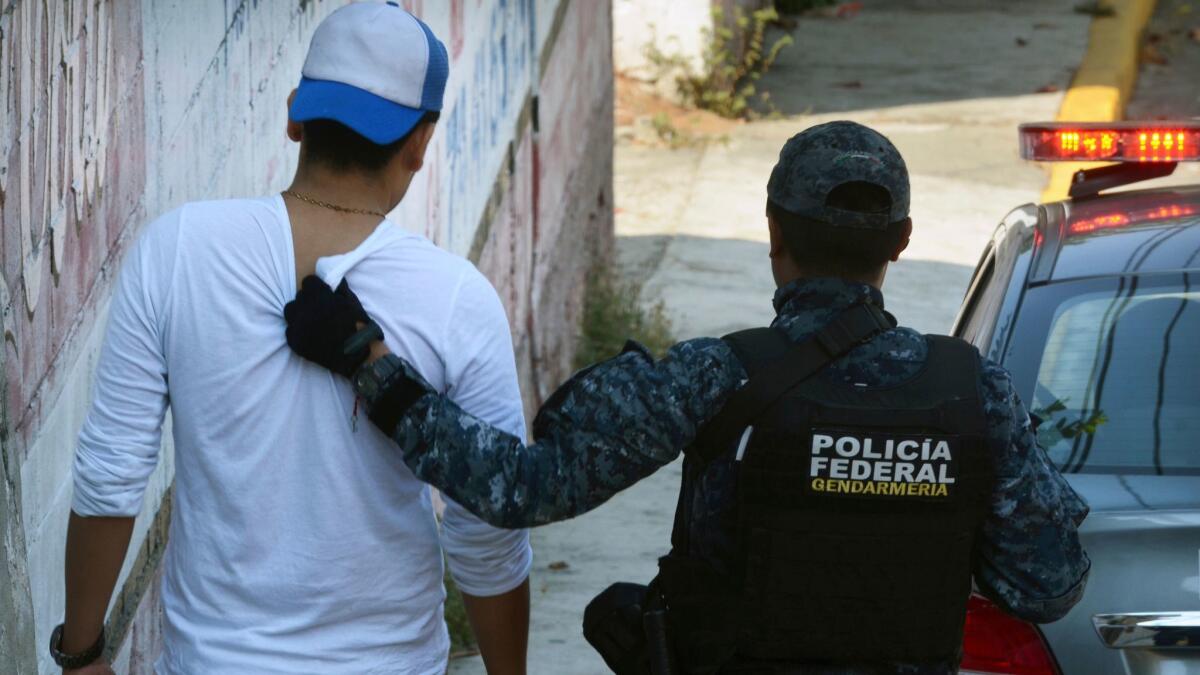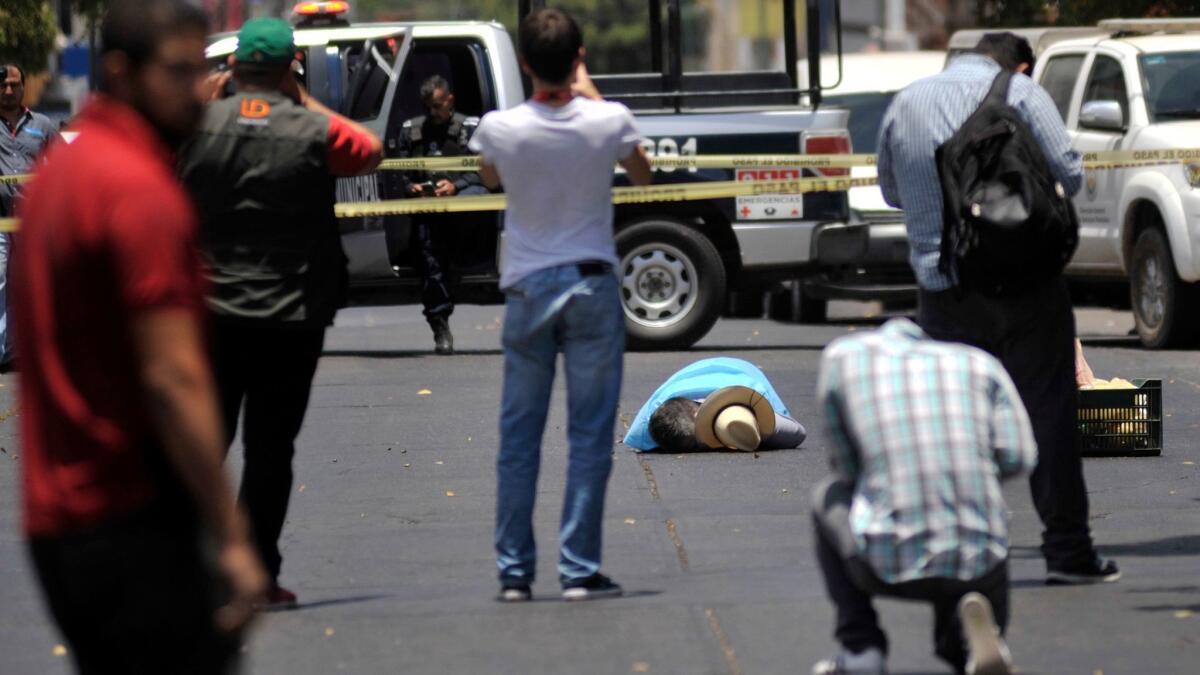Why the State Department said these 5 Mexican states were unsafe for travel

- Share via
This week the United States told its citizens not to visit five violence-ridden Mexican states, placing them on the same warning level given to war-torn Somalia, Afghanistan and Syria.
The State Department’s newest travel advisory for Mexico included “do not travel” warnings for the northeastern border state of Tamaulipas and the Pacific coast states of Colima, Guerrero, Michoacan and Sinaloa. The advisory, released Wednesday, gave the states its highest-risk Category 4 warning, the same classification the U.S. has given conflict-racked nations such as Libya and Yemen.
Violence has been on the rise across Mexico in recent years. Last year, the nation recorded more homicides than in any year since the government began releasing statistics in 1997. But the bloodshed has been concentrated in certain areas.
Here is a breakdown of what is happening in each of the five Mexican states on the State Department’s list — and why the U.S. thinks citizens should stay away.

Colima
Known for: The fourth smallest state in Mexico, Colima has the smallest population, with 650,000 residents. The city of Manzanillo, on the Pacific coast, boasts one of Mexico’s busiest ports, while the city’s beaches have long drawn both domestic tourists and international cruise ships.
Homicide rate: 83 deaths per 100,000 people in the first 11 months of 2017.
What’s happening: Rival cartels have been battling for control of Manzanillo’s port, a primary point of entry for drugs from South and Central America as well as for precursor chemicals coming from Asia that are used to manufacture synthetic drugs. “Violent crime and gang activity are widespread,” the U.S. warned in its travel advisory. “Do not travel.”

Guerrero
Known for: One of Mexico’s poorest states, Guerrero is home to what was once the country’s poshest resort. Acapulco, set on a bay surrounded by high rises and the Sierra Madre del Sur, used to attract Hollywood stars and Mexico’s elite.
Homicide rate: 59 deaths per 100,000 people in the first 11 months of 2017.
What’s happening: The cartel that once dominated Acapulco and the rest of the state fractured years ago, leaving smaller criminal groups to violently vie for power. There are more than a dozen gangs fighting in Acapulco, which is now Mexico’s homicide capital. Up in the Tierra Caliente, a region that encompasses parts of northern Guerrero and neighboring Michoacan state, gangs have been battling for control of poppy production. Poppy grown in Guerrero and other states has made Mexico the No. 1 exporter of heroin to the U.S.
“Armed groups operate independently of the government in many areas of Guerrero,” the U.S. warned in its travel advisory, adding that members of those groups “frequently maintain roadblocks and may use violence towards travelers.”

Michoacan
Known for: A mostly agricultural state, Michoacan is a key avocado and lime producer. It is also a top sender of migrants to the U.S.
Homicide rate: 59 deaths per 100,000 people in the first 11 months of 2017.
What’s happening: Violence erupted in Michoacan starting in the mid-2000s, as cartels battling for control of methamphetamine production expanded to extortion and kidnapping. The government’s failure to bring order spawned a citizen vigilante movement, and to this day, masked citizen police roam the state. In some towns, they have taken over local governments.

Sinaloa
Known for: A long, skinny state that hugs the Pacific coast, Sinaloa is known for its ample agricultural production and as the birthplace of banda — a beloved musical genre heavy on brass and percussion. It was also the birthplace of Joaquin “El Chapo” Guzman, a poor kid who sold oranges in the street before becoming Mexico’s most infamous drug cartel leader.
Homicide rate: 41 deaths per 100,000 people in the first 11 months of 2017.
What’s happening: After Guzman’s arrest and extradition to the U.S. last year, his Sinaloa cartel fragmented into warring factions. Those factions are fighting each other as well as well as gangsters aligned with the ascendant Jalisco New Generation cartel, which has quickly taken control of wide swaths of the country with its brutal tactics.
“Violent crime is widespread,” the U.S. warned in its travel advisory for Sinaloa.

Tamaulipas
Known for: A border state located on Mexico’s Gulf coast, Tamaulipas has long been defined by its proximity to the United States. A large amount of Mexican trade travels through the state, and U.S. citizens frequently cross into Matamoros and Reynosa, across the border from Brownsville and McAllen, Texas, respectively.
Homicide rate: 20 deaths per 100,000 people in the first 11 months of 2017.
What’s happening: Tamaulipas has been engulfed in violence between factions of the Gulf cartel and the Zetas criminal group. While the homicide rate there is not as high as in other states, extortion and kidnappings are rampant. About one-fourth of all kidnappings in Mexico occur in the state.
“Violent crime, such as murder, armed robbery, carjacking, kidnapping, extortion and sexual assault, is common,” the U.S. travel advisory said, adding that armed criminal groups have targeted public and private passenger buses traveling through the state, “often taking passengers hostage and demanding ransom payments.”
“Local law enforcement has limited capability to respond to violence,” the advisory warned.
To read the article in Spanish, click here
Sign up for Essential California
The most important California stories and recommendations in your inbox every morning.
You may occasionally receive promotional content from the Los Angeles Times.






